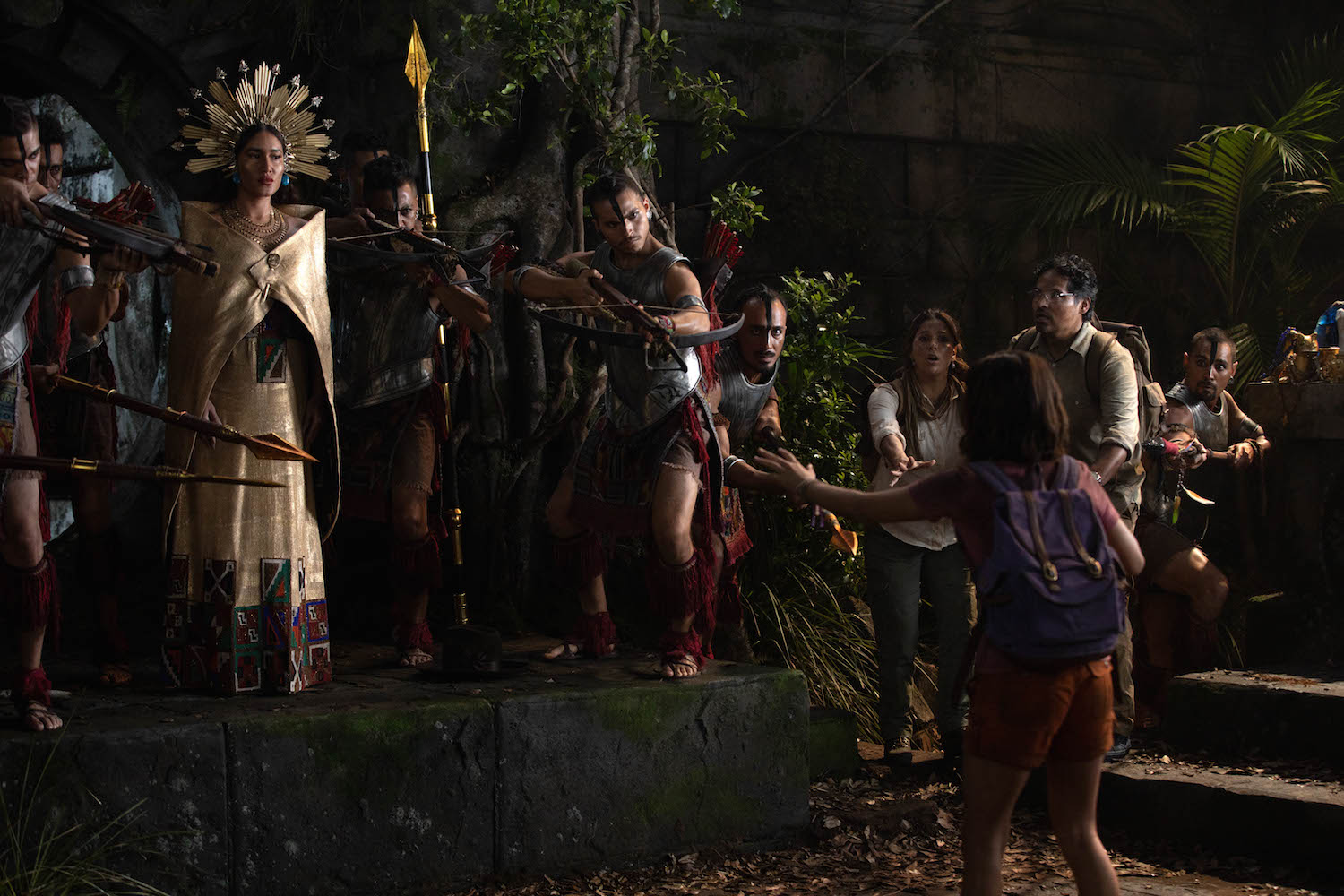When the sequel Indiana Jones and the Kingdom of the Crystal Skull hit theaters over a decade ago, Américo Mendoza-Mori, coordinator of the Quechua Language Program at the University of Pennsylvania, was excited about the prospect that indigenous cultures and history would be included in the film, since much of it was set in South America in the 1950s. As an academic, Mendoza-Mori, however, was disappointed with the outcome.
“The movie had many inaccuracies,” he told Remezcla during a phone interview. “[The film] said Indiana Jones met Pancho Villa, who was the one that brought him the language of Quechua. It was this idea that everything below the Rio Grande is the same, which, of course, it’s not.”
These kinds of cinematic mistakes were one of the main reasons Mendoza-Mori was thrilled when he received a call from Paramount Pictures a couple of years ago. They asked if he would like to serve as a cultural consultant on their upcoming family-friendly film Dora and the Lost City of Gold, a live-action version of the animated TV series Dora the Explorer. The movie follows Dora, her cousin Diego and their classmates on an adventure through the Amazon rainforest in search of her scientist parents and a lost Inca civilization.
During preproduction, Mendoza-Mori was able to review the entire script for the film, which called for some Quechua dialogue. Since the studio wanted the language to be as authentic as possible, he was hired to translate some of it from English to Quechua.
Quechua is an indigenous language spoken by people in the Peruvian Andes and other parts of South America. It is the most widely spoken indigenous language with between 8 to 10 million speakers across countries such as Peru, Bolivia and Ecuador.
“They wanted me to make sure the Quechua references were correct,” Mendoza-Mori said. “It was a translation, but it was also an adaptation because there are many things in English that were not really possible to translate into Quechua. It’s a concrete language and doesn’t have many abstract concepts.”
For example, Mendoza-Mori said there isn’t really a translation of the English word “explorer” into Quechua. “‘Explorer’ is a more western notion of going around the world,” he said. “The translation I liked more was walkers of pachamama [Mother Earth]. It’s a term that has a very important meaning in Quechua because indigenous people don’t live in the world. They see themselves as part of it.”
When filming began, the studio would send him audio of actors, including Isabela Moner, who portrays the title character, performing her lines in Quechua. Moner, who is half-Peruvian, knew a bit about the language from her older family members still living in Peru, but never had a chance to speak it as much as she does in Dora.
“All my grandpas and grandmas from my mom’s side of the family, they all speak Quechua to some extent,” Moner said. “Some of them only know dirty jokes, but some of them actually know how to speak it. I knew about it, but I never spoke it. This was a great opportunity for me to feel more connected to my culture.”
To help her and the rest of the cast feel comfortable with their lines, Mendoza-Mori would record his own audio if he felt any of their pronunciations could be improved and send it back to the studio.
“I think Isabela did a really great job with the pronunciation of Quechua,” he said. “I think she was motivated to connect with her own roots. That was reflective in how professional and careful she was to achieve the correct pronunciation.”
Mendoza-Mori said the most important moment in the film when Quechua is spoken is when Dora has a deep conversation with the Inca Princess Kawillaka (played by Q’orianka Kilcher), a name consciously chosen because it pays homage to an old manuscript from the 16th century that reveals some of the history of the Andes.

The scene between Dora and Kawillaka takes place in the fictional city of Parapata, which Mendoza-Mori said is based on the El Dorado legend. During the scene, Kawillaka asks Dora why she and her friends have come to Parapata, and Dora tells her they are there “to learn.”
“[The film] is a tribute to indigenous knowledge,” he said. “It’s from a U.S. perspective, but it’s very respectful. Even the Peruvians I’ve spoken to are very excited about the presence of Quechua in a [Hollywood] movie. It gives us a chance to publicly discuss the value of the language.”
Mendoza-Mori thinks movie studios’ interest in language and cultural accuracy is a modern phenomenon spurred by high-profile movies like Black Panther, Roma and Coco. “These films have really shaped the industry on how we should approach narrating stories,” he said. “If we start recognizing that Quechua or Zapotec or Nahuatl are languages that are spoken by millions of people today, then we will start recognizing the people that speak those languages and their individual cultures. I think the industry is trying to be more mindful.”
Being more mindful also includes the use of other cultural references in Dora that could be considered (in media terms) as indigenous Easter eggs. Mendoza-Mori points to the movie’s “many winks to Andean knowledge” — knowledge of the stars and constellations and the value and appreciation of nature and technology that make up a special part of plot. For example, the film references the ancient Inca form of communication known as khipu where information is stored on cords made of cotton and wool and fastened with knots.
“The movie makes room for all of this,” he said. “It goes a lot deeper, so people might want to watch the film a second time to make sure they catch all the references. Symbols like these show how diverse Latino identity is and how important it is to embrace our indigenous heritage.”
Dora and the Lost City of Gold is currently in theaters.







